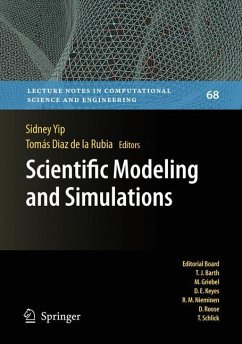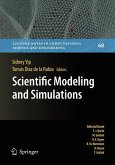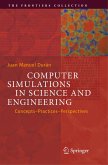The conceptualization of a problem (modeling) and the computational solution of this problem (simulation), is the foundation of Computational Science. This coupled endeavor is unique in several respects. It allows practically any complex system to be analyzed with predictive capability by invoking the multiscale paradigm-linking unit-process models at lower length (or time) scales where fundamental principles have been established to calculations at the system level.
The community of multiscale materials modeling has evolved into a multidisciplinary group with a number of identified problem areas of interest. Sidney Yip and Tomas Diaz De La Rubia, the editors of this volume, have gathered 18 contributions that showcase the conceptual advantages of modeling which, coupled with the unprecedented computing power through simulations, allow scientists to tackle the formibable problems of our society, such as the search for hydrocarbons, understanding the structure of a virus, or the intersection between simulations and real data in extreme environments.
Scientific Modeling and Simulations advocates the scientific virtues of modeling and simulation, and also encourages the cross fertilization between communities, exploitations of high-performance computing, and experiment-simulation synergies.
The contents of this book were previously published in Scientific Modeling and Simulations, Vol 15, No. 1-3, 2008.
Although computational modeling and simulation of material deformation was initiated with the study of structurally simple materials and inert environments, there is an increasing demand for predictive simulation of more realistic material structure and physical conditions. In particular, it is recognized that applied mechanical force can plausibly alter chemical reactions inside materials or at material interfaces, though the fundamental reasons for this chemomechanical coupling are studied in a material-speci c manner. Atomistic-level s- ulations can provide insight into the unit processes that facilitate kinetic reactions within complex materials, but the typical nanosecond timescales of such simulations are in contrast to the second-scale to hour-scale timescales of experimentally accessible or technologically relevant timescales. Further, in complex materials these key unit processes are "rare events" due to the high energy barriers associated with those processes. Examples of such rare events include unbinding between two proteins that tether biological cells to extracellular materials [1], unfolding of complex polymers, stiffness and bond breaking in amorphous glass bers and gels [2], and diffusive hops of point defects within crystalline alloys [3].
The community of multiscale materials modeling has evolved into a multidisciplinary group with a number of identified problem areas of interest. Sidney Yip and Tomas Diaz De La Rubia, the editors of this volume, have gathered 18 contributions that showcase the conceptual advantages of modeling which, coupled with the unprecedented computing power through simulations, allow scientists to tackle the formibable problems of our society, such as the search for hydrocarbons, understanding the structure of a virus, or the intersection between simulations and real data in extreme environments.
Scientific Modeling and Simulations advocates the scientific virtues of modeling and simulation, and also encourages the cross fertilization between communities, exploitations of high-performance computing, and experiment-simulation synergies.
The contents of this book were previously published in Scientific Modeling and Simulations, Vol 15, No. 1-3, 2008.
Although computational modeling and simulation of material deformation was initiated with the study of structurally simple materials and inert environments, there is an increasing demand for predictive simulation of more realistic material structure and physical conditions. In particular, it is recognized that applied mechanical force can plausibly alter chemical reactions inside materials or at material interfaces, though the fundamental reasons for this chemomechanical coupling are studied in a material-speci c manner. Atomistic-level s- ulations can provide insight into the unit processes that facilitate kinetic reactions within complex materials, but the typical nanosecond timescales of such simulations are in contrast to the second-scale to hour-scale timescales of experimentally accessible or technologically relevant timescales. Further, in complex materials these key unit processes are "rare events" due to the high energy barriers associated with those processes. Examples of such rare events include unbinding between two proteins that tether biological cells to extracellular materials [1], unfolding of complex polymers, stiffness and bond breaking in amorphous glass bers and gels [2], and diffusive hops of point defects within crystalline alloys [3].








